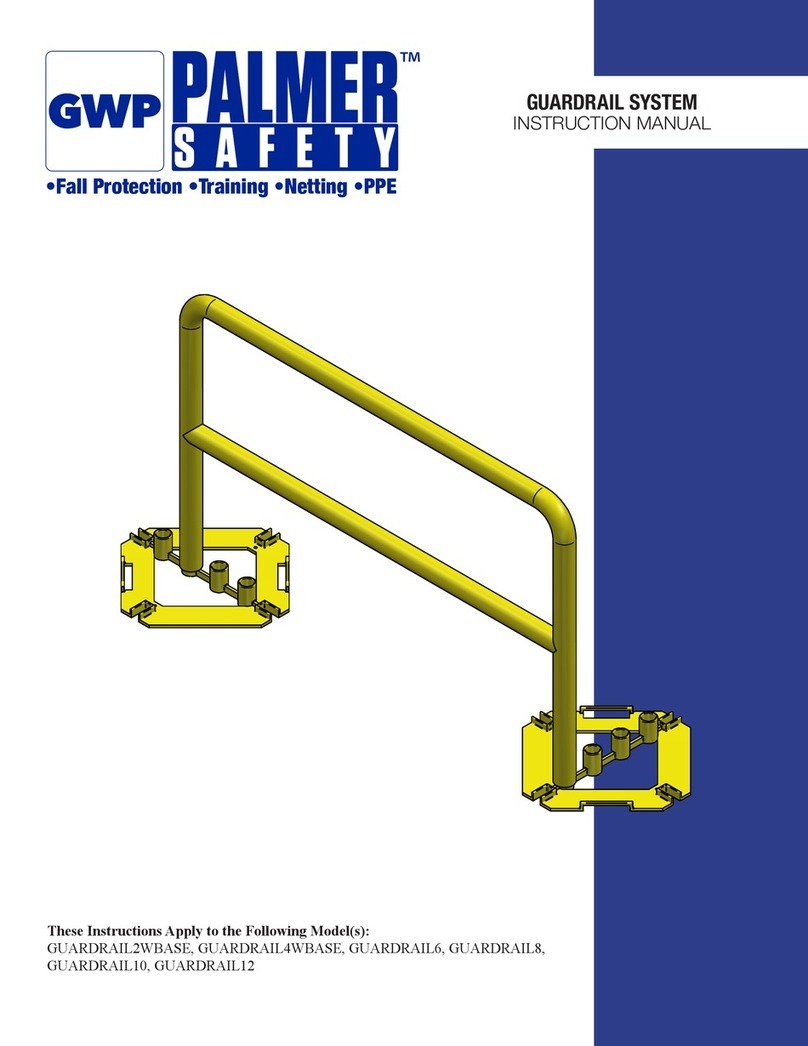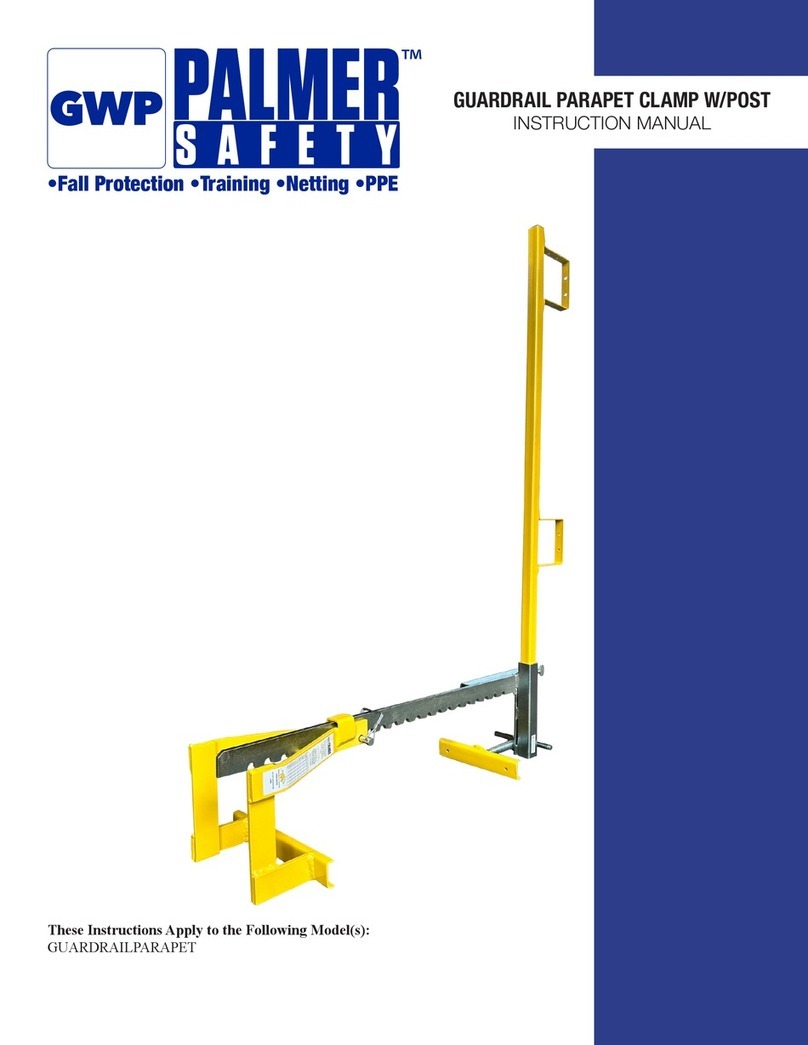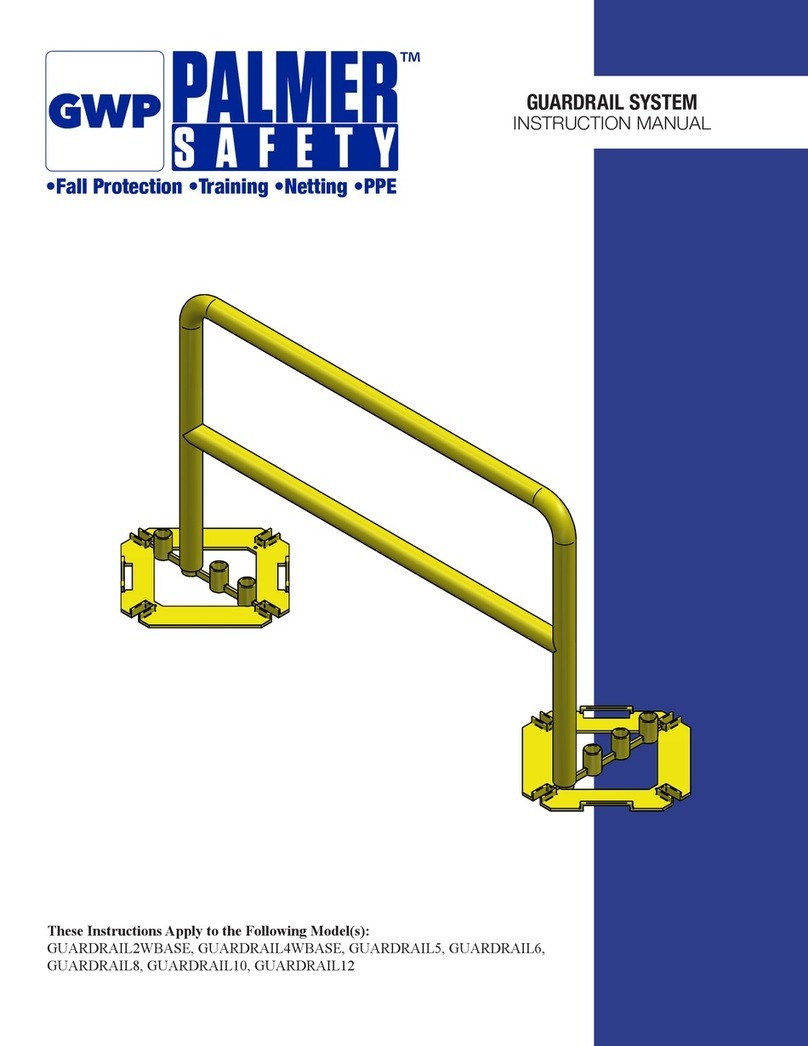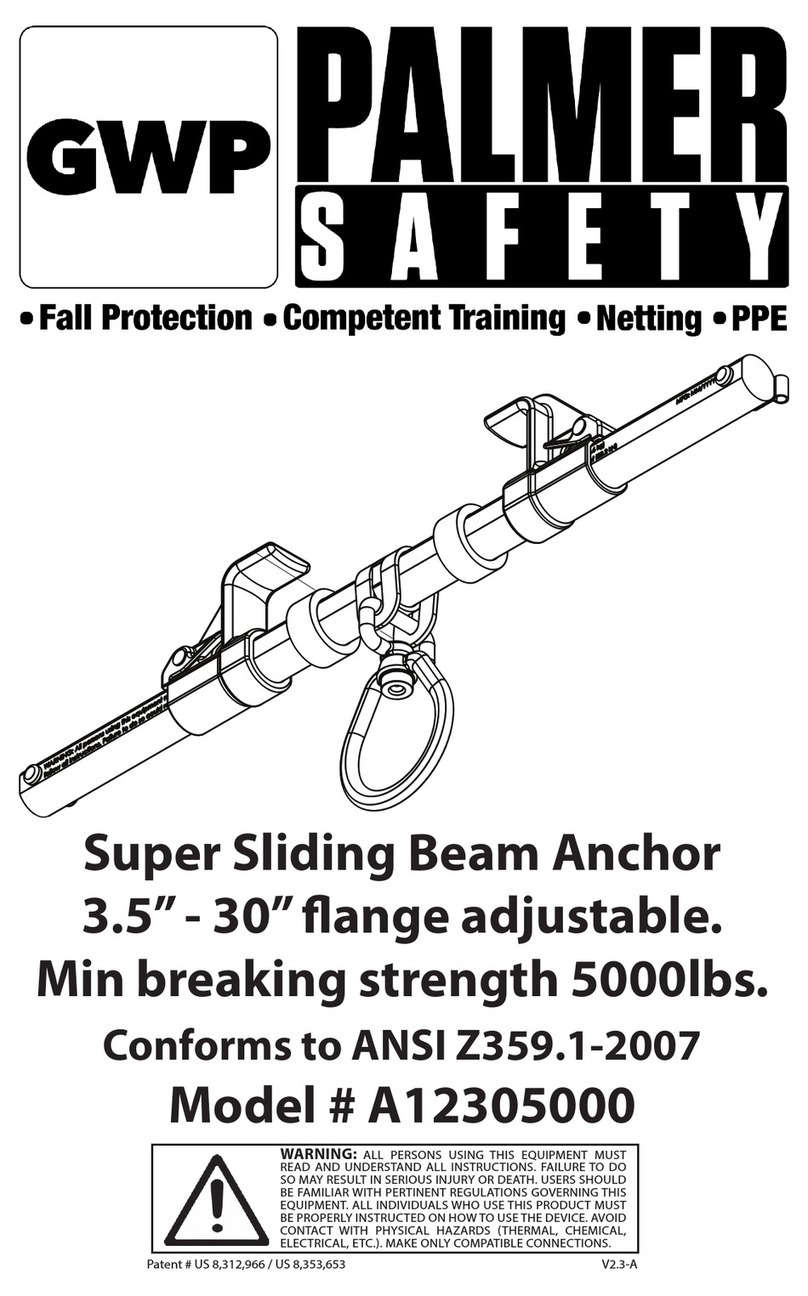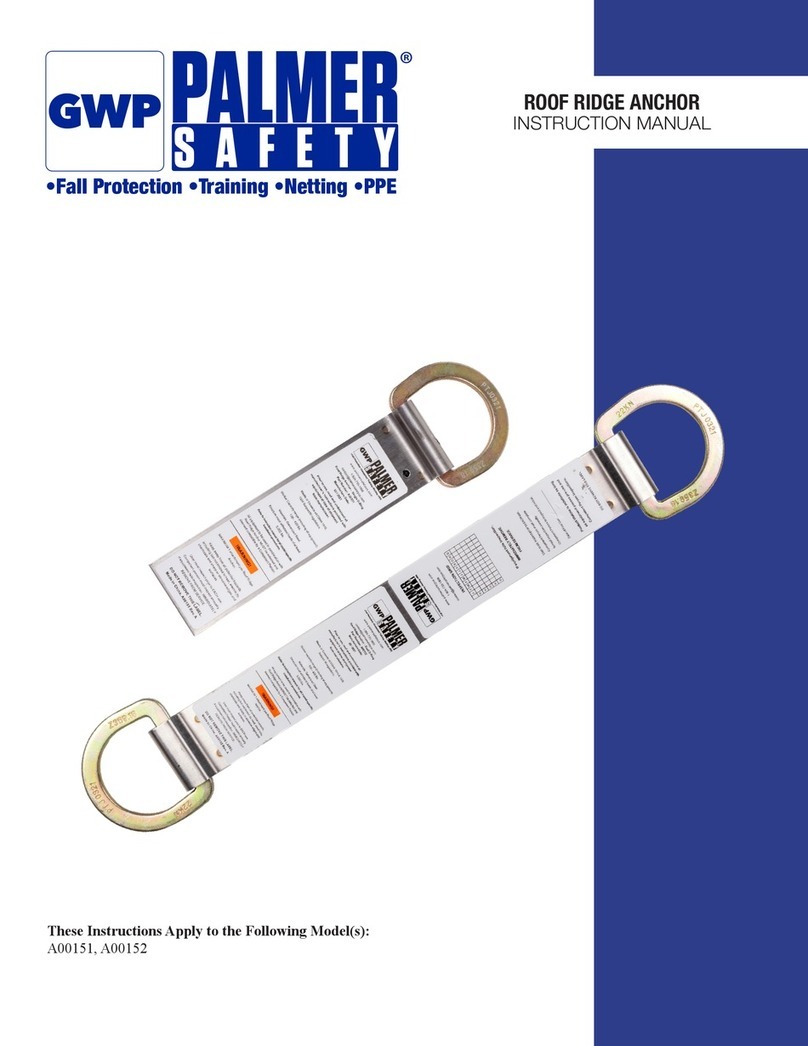
4. O-rings and sliders: Palmer Safety
provides (2) 2½” O-rings that should be
applied to the cable lifeline to allow
compatible attachment of snap hooks and
other connecting devices.
O-rings and sliders must be attached to the
lifeline before the system is complete.
For systems with multiple intermediate
anchor points or for any other questions,
contact Palmer Safety Fall Protection .
Table 1
Clip Size
(in.)
Rope Size
(in.)
Minimum
# of Clips
Amount of
Rope to Turn
Back (in.)
Torque
(ft. lbs.)
3/16
1/4
5/16
3/8
7/16
1/2
9/16
5/8
3/4
7/8
1
11/8
1¼
13/8
1½
3/16
1/4
5/16
3/8
7/16
1/2
9/16
5/8
3/4
7/8
1
11/8
1¼
13/8
1½
2
2
2
2
2
3
3
3
3
4
5
5
6
6
7
4
4
5
5¼
6½
11
12¾
13½
16
26
37
41
55
62
78
30
30
30
45
65
65
130
130
225
225
225
360
360
500
500
If greater number of clips than shown are used, amount of turn-back should be increased proportionately.
Torque values shown are based upon the threads being clean, dry, and free of lubrication.
Palmer Safety Fall Protection 6000 Jefferson Highway Harahan, LA 70123 phone: (504) 733-1808 email: [email protected] palmersafetyus.com 9
Maintenance, Cleaning, and Storage
If Cable HLL System fails inspection in any way, immediately remove it from service, and contact Palmer
Safety to inquire about its return or repair.
Cleaning after use is important for maintaining the safety and longevity of Cable HLL System. Remove all
dirt, corrosives, and contaminants from Cable HLL System before and after each use. If Cable HLL System
cannot be cleaned with plain water, use mild soap and water, then rinse and wipe dry. NEVER clean Cable
HLL System with corrosive substances.
When not in use, store equipment where it will not be affected by heat, light, excessive moisture,
chemicals, or other degrading elements.
Inspection
Prior to EACH use, inspect Cable HLL System for deficiencies, including, but not limited to, corrosion,
deformation, pits, burrs, rough surfaces, sharp edges, cracking, rust, paint buildup, excessive heating,
alteration, fraying, bird-caging, and missing or illegible labels. IMMEDIATELY remove Cable HLL System from
service if defects or damage are found, or if exposed to forces of Fall Arrest.
Ensure that applicable work area is free of all damage, including, but not limited to, debris, rot, rust, decay,
cracking, and hazardous materials. Ensure that selected work area will support the application-specific
minimum loads set forth in this instruction manual. Work area MUST be stable.
At least every 6 months, a Competent Person other than the user must inspect Cable HLL System.
Competent Person inspections MUST be recorded in inspection log in instruction manual and on equipment
inspection grid label. The Competent Person must sign their initials in the box corresponding to the month
and year the inspection took place.
During inspection, consider all applications and hazards Cable HLL System has been subjected to.












